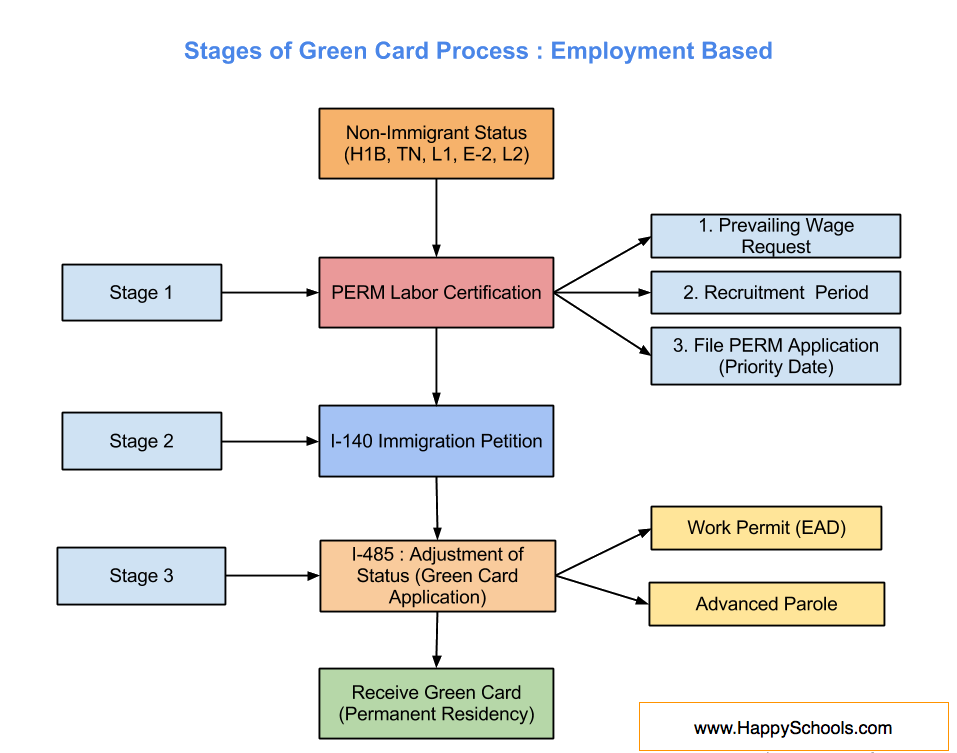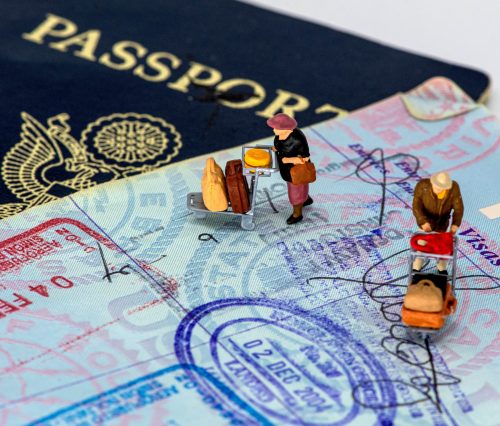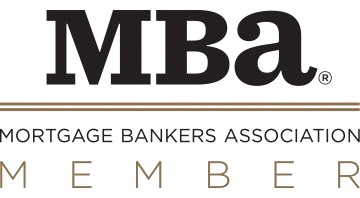Editorial Integrity
Moving to the US can feel overwhelming, filled with unknowns and uncertainties. HomeAbroad editorial team includes certified immigration experts/USCIS nerds who translate complex legalese into clear, actionable moving and visa guides. Rest assured, every article undergoes a reader-centric editorial process to ensure accuracy and reflect current regulations.
Are you thinking of coming to the United States to work? Do you have a specialized skill that is in high demand? You may be interested in learning more about the L1B visa. This article will provide a complete guide to the L1B visa, including eligibility requirements and how to apply. So read on to find out if this visa could be right for you!
Table of Contents
What is L1B Visa?
The most basic definition of the L1B Visa is that it is a non-immigrant visa for people who want to work in the United States and perform professional tasks. The L1B Visa allows foreign nationals to enter the United States as expert knowledge employees for their employers in the U.S. As a result, being a specialized knowledge specialist is an essential requirement for the L1B.
The L1B Visa is also known as the intracompany transferee visa. L1B Visa provides a way for foreign companies to shift some of their employees to set up work in the United States on the company’s behalf. For example, suppose a foreign firm does not already have a patent office in the United States. The L1B Visa might allow it to set up a subsidiary, affiliate, or branch office. The L1B visa allows the foreign company to send an employee to establish a new office in the United States.
The company’s employer submits the employee’s petition. In addition, they are required to submit the professional credentials of the worker, proving that the employee is experienced in their industry and will be employed in the United States division of the firm.
There are mainly two classifications for the Visa:
L1B Visa: The L1B visa is for foreign workers who will work as highly skilled knowledge professionals in the United States.
L1A Visa: The L1A visa is for foreign professionals working in the United States as managers or executives.
L1B Intracompany Transferee Specialized Knowledge
L1B visa allows foreign non-immigrant employees for intracompany transferees with specialized knowledge, per the USCIS requirement.
In simple words, the company petitioning for an L-1B visa must prove that the applicant has unique knowledge about the international market needed to help the company in its business interests in the United States.
Being a specialized knowledge employee, you should be thorough with:
- The employer’s interest
- You must be essential to the program’s or company’s growth.
- Your company’s expansion into foreign markets
- Expertise in your company’s process and procedures
- The employee’s unique understanding must relate to the organization’s interests and desire to relocate a foreign office to an affiliated office in the United States.
Besides, you must be a particular profession, such as a physician, lawyer, architect, teacher, and engineer.
The L-1B visa is for an intracompany transferee with specialized knowledge. You must have a deep understanding of your petitioning organization of the following things:
- Product description
- Services
- Research development
- Equipment
- Management of the company
- Technicalities of the work
- Any other interest
You must show a thorough understanding of their unique qualifications and experience in the field. Employee specialized knowledge is influenced by the company’s higher level of performance, demonstrating the distinction between employee specialist knowledge and other employees.
In other words, the knowledge must be relevant to opening a new company branch in the United States.
Eligibility Requirements for L1B Visa
Some criteria must meet both the employer and employee to qualify for an L1B visa; each category has its standards.
L1B Visa Requirements for Employees:
The employee must have worked for a qualifying company in one of the previous three years while overseas for at least a year.
To work for a branch of the same employer or qualifying organization(s) and provide specialized knowledge, you must be attempting to enter the United States to work for such a business.
L1-B Visa Requirements For Employers:
The foreign organization must have a qualifying relationship with the employer.
All parent companies, branches, affiliates, and subsidiaries are eligible to apply.
The company must be an American employer who plans on or is currently doing business in another country. The company must also be doing this directly or through a qualifying organization while the person with the L-1B visa is working in the United States. The employer’s job is not necessary to conduct international trade.
Doing business does not entail being present as an agent or office in the United States or abroad. To be considered a business, the employer must provide the service regularly, organize, and continuously.
Additional L1-B Requirements
Employer Qualifications for Setting Up New U.S. Offices
Finding a new base or office to establish in the United States is one of the significant factors for both the employer and the employee. Suppose the employer is a petitioner who resides outside of the United States and wants to establish a new work location in the United States for one of their specialized knowledge experts. In that case, the employer must be in a position to prove the following:
- Obtained a location that could accommodate the new office and is prepared to pay for it
- The money is available to be spent on the employee and may now begin doing business in the United States.
L-1 Visa Reform Act
The L-1 Visa Reform Act of 2004, passed in June 2004, applies to all petitions submitted after June 6, 2005, and is mainly aimed at those filed on behalf of L-1B workers who will reside primarily at the work site of an employer other than the petitioning employer or its affiliate, subsidiary, or parent. The petitioning employer needs to prove:
- An employment relationship in which the employee is not controlled or supervised by an unconnected employer.
- Your job will not be considered labor for hire by an unconnected employer if you do it on your own.
Documents Required for L1B Visa
Every visa application process necessitates the submission of a number of documents to support one’s eligibility for that sort of visa.
When applying for your L-1 Visa, you must submit the following documentation:
- Form DS-160 completed Visa application
- Form DS-160 and L supplement copy
- Employer’s Form I-797, Notice of Action, which includes employee text
- Current and old passports(if any)
- Recent passport size photograph
- Interview appointment letter (original and photocopy)
- Bank records for the previous six months
- Referee details such as contact details of coworkers from previous jobs
- The receipt number of the I-129 petition, along with a physical copy
- Visa issuance fee demand draft
- Work experience letters from previous employers
- Certificates of training undertaken, degree (original with photocopy)
You'll need the following paperwork from a firm based in the United States:
- Stock records and certificates
- Lease and agreement of the business location
- Wire transfer or bank statement showing the original investment
- Audited accounting records
- Income tax return Form 1120 (if any)
- Employer’s Quarterly Report Form 941 (if any)
- Information on the company’s business
- Documents including contracts, bills of lading, letters of credit, invoices, and more.
- Bank statements
- Company letterhead
You'll need the following paperwork from a foreign firm:
- Proof of legal practice such as a Business license
- Document establishing the corporation
- Three years’ worth of income tax returns from the IRS
- Audited accounting reports
- Number of employees in all organizational levels, as well as the position held by the incoming director
- Company brochure or product introduction
- Documents of business invoices (contracts, bills of lading, letters of credit)
- Bank statements and transaction script
- Note from the company, company logo, name, and address
The following documents are necessary from the transferee:
- Resume
- Diploma
- Payment statements
- Income tax records
- Organization charts that display your position in the company
- Other feedback from bosses, coworkers, and others
- Explanation of your managerial or executive role
- A letter from the foreign firm confirming the employment of a person who previously worked for that firm
- The transfer was confirmed in writing by the board or appointment papers proving the handover
- Documents that demonstrate the ability of the transferee to conduct business in an executive position, such as a resume.
- If you have special expertise, offer patent and trademark registrations for your business.
How to Apply for L1B Visa?
Before applying for an L1B visa, you must compile a comprehensive documentation file. Here are six steps as to how you can follow up on your L1B visa process:
Step 1: Get a Transfer Order
If your employer is a company with an affiliate or branch in the United States, he must provide an intracompany transfer offered in a specialized area of expertise. So, you must have a transfer order. It might be a position in which you manage or direct other people. You can now begin the application procedure from this point forward.
Step 2: File I-129 Petition
The employer must submit the I-129, Petition for a Nonimmigrant Worker and L Classification Supplement. You must send the form to the direct filing address linked with the company’s location, which is usually different from the mailing address.
Step 3: Wait for the Approval of I-129
The employee should obtain the form I-129 receipt number after the employer completes and submits the I-129 petition and L supplement. This figure is on the I-129 petition that has been approved. Then, when the USCIS receives your application, you’ll get a receipt in the mail and an acceptance or denial.
Step 4: Submit Form DS-160
The next step is completing Form DS-160. Again, you can do this online. When completing the form, you must provide various information about your trip to the United States, among other things. The U.S. embassy will determine whether or not to approve your application on this form. You’ll receive a confirmation number and page after you submit the form. Save the number and the page because you’ll need them later.
Step 5: Pay the Application Fee
The next step is paying the $190 application fee. All applicants are required to pay this processing charge. Additionally, you may be charged extra costs depending on your home country’s tax laws or reciprocity rules with the U.S. However, you’re ready to go once you’ve paid all fees and have receipts to attach to your papers.
Step 6: Schedule an Interview
Schedule an interview with the U.S. embassy officials. It’s critical to schedule an appointment for the interview as soon as possible. That’s because, in most cases, embassies operate on a tight schedule. You’ll receive a visa interview appointment letter after booking an interview.
When you attend the visa interview, you must bring all the documents required for L1B Visa, as mentioned in the section above.
The interview is an essential aspect of the application procedure, and it will have a significant impact on the selection process. A USCIS official will interview you and ask you questions based on the document you’ve submitted.
The interview needs to go well. This suggests that your visa will be processed in the near future if it goes well. The government is looking to evaluate your intentions for visiting the United States to show that your claims are genuine and that you will be employed in the U.S. with a specified organization or branch.
To the passport issuing location or visa collection facility you specified when making your visa interview appointment, your passport will be sent by courier service.
Getting an Extension
The period you have permission to stay in the United States and continue working is determined by your visa. You’ll learn about this on your Form I-94. This is the form you must complete when entering the United States. If the date expires, your employer may request an extension. If the U.S. embassy grants the extension, you may remain in the United States longer.
How Much Does it Cost to Apply for an L1B Visa?
The L-1B visa cost for Form I-129 is: $460
The processing fee you will need to pay: is $190
Premium Processing costs: $2,500. The United States Citizenship and Immigration Services (USCIS) guarantees to process within 15 calendar days
Petitioners who employ 50 U.S. employees: $4,500. More than half of those individuals have H-1B, L-1A, or L-1B non-immigrant status.
Employers looking to have Initial L-1 statuses or permission to change employers, including new concurrent employment, are granted when an L-1 holding employee seeks a transfer to a new employer. They need to pay: $500
Processing Time for L1B Visa
It may take three to four months for you to receive a response from USCIS regarding your request for an L1B Visa application.
However, if the employer files an individual petition, it may take longer to process than if the employer files a blanket petition.
Simultaneously, note that premium processing is also an option. That is to say, in exchange for a higher charge, the visa application may be completed within three weeks. In a case of an emergency, you can pay some extra amount to make things go faster.
Benefits of Holding an L1B Visa
Depending on your immigration status, the L-1 visa has several advantages that the others do not.
Low Requirements
Several work visas are available to foreign professionals who want to work in the United States. Unfortunately, many of them have stringent criteria that are hard to fulfill.
The O-1 visa requires applicants to demonstrate their outstanding talent through international honors or a large income. Canadians and Mexicans are the only ones who can apply for T.N. visas. A significant financial investment is required for the E-2 visa.
The L-1 visa, however, requires you to be a manager, executive, or specialized employee in a multinational company to be qualified. This paves the way for many people that are otherwise ineligible for other work visas.
No Job Offer Required
If you are a qualified L-1 visa applicant, you have already been employed by a company in the United States that will sponsor your application. Finding a company that will sponsor you for an H-1B, J-1, or T.N. visa may be one of the most challenging aspects of obtaining such a visa.
No Annual Limits
There are no restrictions on how many L-1 visas can be approved annually. This ensures that your petition will not be rejected due to a lack of available visas.
Period of Stay
Holders of an L-1A visa will be granted three years of admission to the United States. They can then apply for an extension until they have lived in the country for up to seven years.
There is also a five-year limit on the L-1B visa, which makes its duration of stay a disadvantage to other work visas.
Educational Requirements
One of the most significant advantages is that you don’t need a degree to qualify for an L-1 visa. At the same time, some other visas do not necessarily need an education. The O-1, E-2, TN, and J-1 visa classes are examples of this.
Spouses and Dependents Are Allowed to Work
If you are a resident of the United States on L-1 status, you may bring your spouse and children with you as L2 visa holders. They may also apply for an Employment Authorization Document if they qualify, allowing them to work in the United States. This is a fantastic L-1 benefit because it will enable your spouse and children to supplement their income if required.
Dual Intent
The L-1 visa is similar to other non-immigrant visas in that it is considered “dual intent” by the USCIS, allowing L-1 workers to apply for lawful permanent residence status while in the United States. In contrast, the G-1 visa permits participating in employment sponsored by an organization based abroad. In addition, it’s similar to other study visas like J-1 and T.N. classifications, which state that working for a foreign company would jeopardize your status and possibly result in penalties from USCIS.
Buy House and Get Mortgage
Getting an easy mortgage is another benefit of an L1B visa if you wish to buy a house in the United States. If you have the correct documentation and follow procedures correctly, you can easily manage to get a mortgage on an L-1B visa.
Note that it is also much easier for someone holding an L1B visa to get a mortgage loan than it is for other visa holders. The documentation required to apply for a loan depends on the sort and total amount of the loan you are requesting.
You must have the following to be eligible to apply for a mortgage loan on an L1B visa:
- You must have at least two years of job experience in the United States
- You must have a steady employment history in the United States and show two years of credit history.
- For identification and visa verification, you must have a passport.
- Individual Tax Identification Number (ITIN)
- Assets to secure the down payment for the loan.
HomeAbroad is a one-stop platform for all immigrants to buy houses and get mortgages. So, if anyone needs a mortgage or wants to buy a house in the USA on an L1B visa, then we can help.

Pre-qualify for a US mortgage as an international buyer.
No US credit history needed.
Transitioning for Adjustment of Status From an L-1B Visa to a Green Card
One of the main benefits of the L-1B visa is that it offers a path to permanent residency in the U.S., known as a Green Card.
You must first have your employer file a petition with the U.S. Citizenship and Immigration Services (USCIS) on your behalf To qualify for a Green Card. Once the petition is approved, you can apply for permanent residency.
Another benefit of the L-1B visa is that it allows you to explore other employment-based Green Cards while you are in the U.S. on your L-1B status. For example, find a job with another employer willing to sponsor you for a Green Card. You can begin applying for permanent residency without having to leave the country.
There are two green cards available through L1B Visa:
EB-2: The EB-2 green card is available to individuals with exceptional talent or advanced education in their field. To be considered for the EB-2, you must hold a job that necessitates your outstanding ability or high degree. This implies finding a job that needs your superior ability or advanced degree to qualify for an E-B2 visa.
If you’re eligible for an E-B2 Green Card, you can ask USCIS to waive the requirement that an employer file a petition on your behalf through the National Interest Waiver. However, to do so, you’ll have to show how your exceptional talent or higher education is essential to the United States’ national interest.
EB-3: The EB-3 is only available to professionals with:
- At least a bachelor’s degree
- Skilled workers (at least two years of training or work experience)
- Unskilled workers (unskilled labor requiring less than two years of training or work experience).
These programs are a common choice among L-1-B visa holders because they already have proof of their specialized expertise and can easily be classified as specialists or skilled workers.
Other green cards are available through L1B visa:
Other green cards are accessible, although they are generally more difficult to acquire as an L-1B visa holder.
EB-1: the E-B1 Green Card is only available to individuals who have earned international honors, top-level researchers, managers, and executives.
EB-4: There is also the E-B4 Green Card for religious workers and translators.
EB-5: The U.S. Department of Homeland Security’s U.S. Citizenship and Immigration Services has criteria for the EB-5 visa, which is available to individuals who invest significant cash up to approximately $900,000 or $1.8 million in a U.S.-based business venture.
Change of Status from L-1B to L-1A
An L1B visa holder can change their status from L1B to L1A if they want. There are several benefits to being an L1A, the most significant of which is that you may stay in the United States for up to seven years.
It should be noted that if you want to change your status from L1A to L1B, you must file a petition for changing your status to L1A before your current L1B visa expires.
You need to fulfill the following conditions to be eligible for a change of status to an L1A visa:
- You are in charge of developing organizational policies and objectives and making day-to-day business decisions.
- Supervise the work of other workers in managerial positions and professional job titles at the firm or who have significant responsibilities in the firm’s subdivision.
- Have the authority to hire, fire, suggest raises and promotions, and other charges.
- You must be in command of aspects of your company’s operations. You’re the one who has to lay down the rules and objectives, as well as make critical judgments when executing any tasks.
While holding an L1B visa, you cannot change your employer because L1B is an employee-specific visa. Still, there are certain exceptions to the norm, allowing L1B workers to switch their status and go from one employer to another.
L-1B Validity Period of Stay
USCIS allows qualified L-1B visa candidates to initially stay in the United States for up to three years and, if approved, for an additional two years if the person wishes to extend them further. However, no further extensions are possible once the applicant has exceeded the five-year cap.
L-1B visa holders may live and work in the United States for one year to establish a new office in the United States.
You can ask your employer to file a request for a new L–1 visa on your behalf. In addition, there are several other non-immigrant work visas, such as the L-1A and H-1B visas, which have a more extended period of stay, making them excellent alternatives if you want to extend your stay in the United States.
If your visa expires and you wish to stay in the United States beyond the five-year limit, you can also file for a Change/Adjustment of Status before your stay period changes your status to another visa class.
Family Visa for L-1B Employees
The dependent L2 visa is available to the petitioning employee’s unmarried children under 21 and their spouse.
While in the United States, L2 visa holders may apply for Employment Authorization Documents (EAD). The L2 visa is also issued for the same period as the L1B visa granted to the primary applicant. The employment authorization document allows the petitioner’s dependents to work legally in the United States. If the L2 dependents cannot work if the L1B visa has expired or is no longer valid, they will not be able to do so.
L1 Blanket Petitions
The blanket petition has been designed to assist large businesses in obtaining USCIS approval and transferring numerous people on L1 visas to the United States.
They must fulfill the following requirements to be approved for the petition:
- The firm must be engaged in a commercial trade or service operation.
- Must have been in business for one or more years in the United States.
- The firm in another nation and its affiliates in the United States must have obtained 10 L1 approvals within the last year.
- To be considered for the headquarters designation, an entity must have more than 500 employees in the United States and conduct at least $25 million of business activity each year in the country where it is located.
In addition to the following two distinctions in the application procedure, all remaining phases are identical for all L1 visa applicants, whether they have a personal or blanket petition:
- The employer must file a Form I-129S, Nonimmigrant Petition for an Alien Worker, with USCIS. After the application is approved, the employer receives Form I-797, which all transferees must use in their applications.
- The blanket petition is good for three years and may be renewed as needed. However, if the petition expires, the employer is not permitted to file a new blanket petition for three years.
PERM Labor Certification for L1B Visa Holders
There is one other option for visa holders seeking a green card. Such as an employer willing to sponsor their employee through PERM labor certification.

You may be eligible for an EB2 or an EB3 visa class if you are a foreign national who has earned a bachelor’s degree from an institution of higher education in the United States.
The United States Department of Labor issues occupational licenses after receiving the required documents and forms. They must demonstrate that there are no more viable or qualified U.S. workers for the task through market testing or other methods.
Steps of this process include:
- Employers in the United States who are conducting job recruiting procedures, such as posting or advertising, should consider the following:
- They must be unable to locate a suitable U.S. workforce.
- They must make you an offer for a full-time job.
- They must be able to reimburse (pay) you at the established prevailing wage for your services.
This method can be time-consuming, but qualifying under EB2 and EB3 may be appealing, especially if your country’s backlog in these categories is not lengthy.
Conclusion
If you are looking for a way to work in the United States, an L-1 visa may be a good option. This visa has many advantages over other visas, including staying in the country for an extended period and bringing your family with you. Additionally, if you have an L-1 visa, you can apply for permanent residency without leaving the United States.
FAQs
What is the duration of an L1 visa?
If you have an L1A visa, you can work in the United States for up to 7 years.
An L1B visa allows you to stay up to 5 years.
What is the difference between L1A and L1B visas?
L1B Visa: The L1B visa is for foreign workers who will work as highly skilled knowledge professionals in the United States.
L1A Visa: The L1A visa is for foreign professionals working in the United States as managers or executives.
Can My L-1B Visa be Extended?
Yes, the employer can request an extension only once, and your L-1B visa’s validity period will be extended for another two years. Because of this, the maximum duration of this visa is five years.
What type of Questions Will do I Answer on the L-1B Visa Interview?
You will be asked questions about your workplace. How and why your specialized knowledge in your field contributes to the company. Try to avoid any incomplete facts; it’s best to respond to inquiries completely.
Is an L1B visa Eligible for a Green Card?
Yes, an L-1B visa allows you to explore employment-based Green Cards while you are in the U.S. The most popular sources available through L1B Visa for green cards are EB-2 and EB-3. You can also apply for a green card through EB-1, EB4, and EB-5.
Why are L1B Visas Getting Rejected?
There are four main reasons why your L1B may get rejected by the USCIS:
Assessment of the specialized knowledge: If you fail to provide the proof of specialist knowledge, you claim it is both essential to the firm and unavailable in the United States. If this cannot be demonstrated, the USCIS will conclude that your visa application should be rejected.
Submission of documents is incorrect: If you make even a single mistake or error on your application, it may be refused. It can be an incorrect job title or wrong job description, sending the application to the wrong location, or using the incorrect delivery method.
The difference in salary: When the monthly wage for an L1 visa applicant is significantly greater or lesser than industry norms in the United States, this is generally why an l1 visa is refused.
Lack of evidence: If you don’t provide clear evidence that all claims regarding eligibility are more likely true than not, your application is likely to be rejected.

















